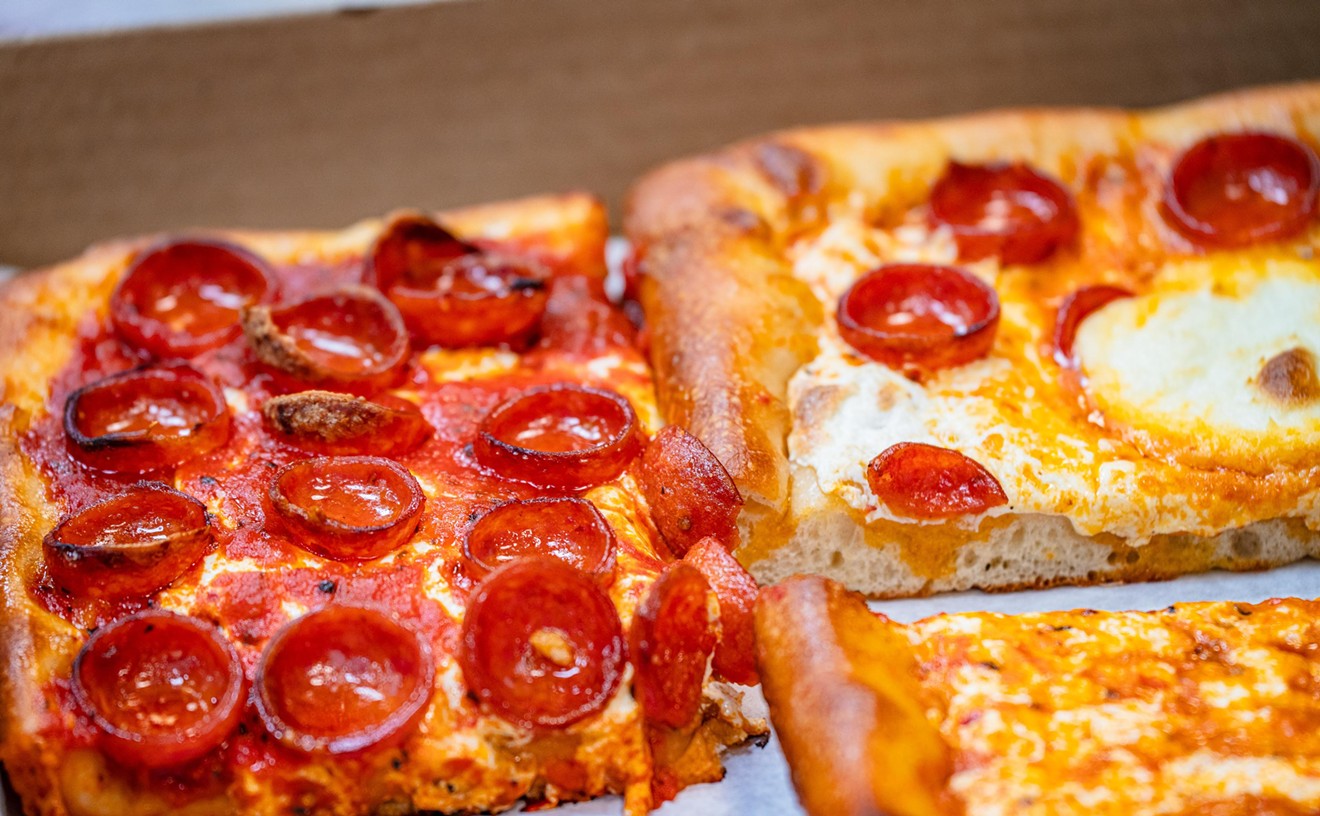Ouch. That's a pretty fatuous (not to mention flatulent) dismissal of a national cuisine. And make no bones about it, unless they're herring bones, Holland does indeed have a cuisine -- a style of preparing food -- to call its own. Yet here in the United States, Dutch fare has never achieved the recognition or had the distinctiveness of, say, Italian, Thai, or Japanese.
But in truth we can't be blamed for our ignorance. In her book The Art of Dutch Cooking, C. Countess van Limburg Stirum explains Dutch cuisine's relative obscurity. Most of her countrymen, she writes, enjoy indigenous dishes such as pannekoek (pancakes), stockvis (dried codfish), and aardappel-puree (mashed potatoes) at home. Restaurants tend to serve the more exotic fare that Dutch traders, over the centuries, brought back with them from their travels. Streets in Amsterdam, for instance, are lined with so many Middle Eastern eateries you'd think you were on the edge of the Mediterranean rather than the North Sea.
Indonesian restaurants are even more popular, equivalent to Chinese places here. At Goodies, Indonesian dishes such as nasi goreng (fried rice, $9.95) and sate (skewered meat topped with a spiced peanut sauce) are listed under the heading "Dutch entrees," a claim that isn't entirely accurate. In the early Seventeenth Century the Dutch East India Company, a private trading firm, began doing business on various islands in the Indian Ocean; the Dutch government supplanted the company in 1799, formally colonizing the islands as the Dutch East Indies (now Indonesia). Consequently, Dutch cuisine became popular on islands such as Bali, and Indonesian fare became as common in Holland as herring.
Dutch interest in cuisines of the world is evident on Goodies' menu. Entrees range from shwarma to chicken curry. But Holland also draws on ideas from its continental neighbors. At Goodies, jager schnitzel ($13.50), a pounded veal fillet that proprietor Nancy de Ree Gutierrez says she introduced to please her German customers, was breaded and fried to a delightful crispness. A side of sauteed mushrooms in a light cream sauce and a scoop of mashed potatoes, skin-on and lumpy, were homey and comforting.
An excellent pasta Alfredo reflected Italian influences. Firm spaghetti was coated with a rich cream sauce that had been spiked with Parmesan cheese. You can add chicken or shrimp to this dish; the shrimp we requested were sweet and fresh, but their small size made them negligible.
Even salads are international, ranging from Italian (mozzarella with tomato and basil) to Greek (feta cheese, onion, and tomato). We selected a French salad as a main course -- a bargain at $4.50. The platter of romaine lettuce was garnished with sliced tomatoes, yellow corn, thin-sliced ham, and mellow Edam cheese; a fragrant homemade basil vinaigrette dressing adorned the ham and cheese.
To the best of my knowledge, the 45-seat Goodies is the only Dutch restaurant in Dade. Gutierrez, who practically grew up in her grandmother's grocery store in Holland, started the business as a market about a year ago. When the place first opened, she expected to restock her supply of Droste chocolate, soft zaanse (licorice drops), and Douwe Egberts coffee once a month and to bring in a major shipment from Holland twice a year. But demand forced her to take inventory on a weekly basis, which she does every Monday when the restaurant is closed; she places a large order every month.
The curiosity that nearby Kendall, Pinecrest, and South Miami residents showed for Dutch products convinced Gutierrez to start serving breakfast and lunch: tosti, grilled Gouda sandwiches, and homemade soups. One of the soups, a watery, absolutely flavorless tomato bisque, was the only item we disliked on our two visits.
By July 1997, with business booming, Gutierrez decided to open for dinner. She taught her Bolivian husband Rene to make the more complicated specialties from her homeland, freeing her to explain the maatjes herring appetizer ($2.75) and other Dutch dishes to her patrons. Imported from Holland, these two cured fillets were served traditionally: bone-in, skin-on, tail-on. The best way to enjoy this dish is to swish each fillet through a garnish of raw, chopped white onions and sweet pickles, then swallow it whole. If that feat sounds a bit too much like frat boys gulping goldfish during a hazing, try what we did: Sandwich each fillet between the fresh-baked whole-grain bread that was brought to the table at the start of the meal (along with a tasty condiment of minced black olives and garlic).
Other starters were less challenging, more immediately appealing. Bitterballen (meatballs dropped into hot oil), enhanced by aioli, were crunchy outside but warm and soft inside. The aioli also pumped up batter-coated pieces of chicken breast, notable for their juiciness. The addition of hand-mixed honey-mustard sauce enlivened a dish of deep-fried cheese -- a half-dozen hunks of smooth, golden Edam ($4.95).
Many Americans who visit Holland return with vivid memories of rijsttaffel, an Indonesian feast comprising dozens of dishes served in small portions. A good rijsttaffel, or "rice table," is unforgettable, and the well-traveled locals who frequent Goodies have asked for it so often that Gutierrez finally decided to present a prix fixe rijsttaffel once a month. Reservations are mandatory and should be made well in advance.
On a daily basis, only the nasi goreng and sate are available. Both dishes were tantalizing. The former was slightly sweet with kecap manis, an Indonesian soy sauce doctored with sugar, garlic, laos (a rhizome similar to ginger), and salam leaf (an herb). Pork nuggets were strewn throughout the stir-fried rice, and a fried egg and crunchy krupuk (shrimp cracker) blanketed the nasi goreng. You can order the rice with a side of sate. The thick, slightly zingy peanut sauce that laces the tender, skewered chicken also complements the pork.
A local purveyor supplies desserts such as apple pie, blueberry crumb squares, and a remarkably good hazelnut layer cake, the moist white cake iced with mocha-infused hazelnut butter cream ($3.25). But this course seems like a missed opportunity, as sweets are neither Dutch nor Indonesian. A pannekoek topped with raisins or apples would offer authenticity, especially when washed down with a cup of imported Dutch coffee or Pickwick tea.
The decor here could also use some improvement. Some tables are topped with black marble, others are made of green plastic. Walls are covered with burlap, over which hang some orange Holland soccer shirts. The cafe looks like what it is -- a restaurant that has grown out of a market without much thought given to design. As for service, the staff is sincere but forgetful. The best attention comes from Gutierrez herself, who makes customers comfortable with unfamiliar fare by engaging them in conversation. She'll even introduce regulars to her children, who sometimes roam around the store and kitchen (and if you visit twice, you're considered a regular). In short, Gutierrez invites guests into her restaurant the way she would ask them into her home. And as far as the Countesss van Limburg Stirum and I are concerned, this kind of welcome is the only way foreigners can truly become acquainted with the subtleties of Dutch cuisine.
Goodies from Holland Cafe
8461 SW 132nd St; 278-2783. Breakfast, lunch, and dinner Tuesday -- Saturday from 9:00 a.m. to 9:00 p.m; Sunday from 9:00 a.m. to 3:00 p.m.










